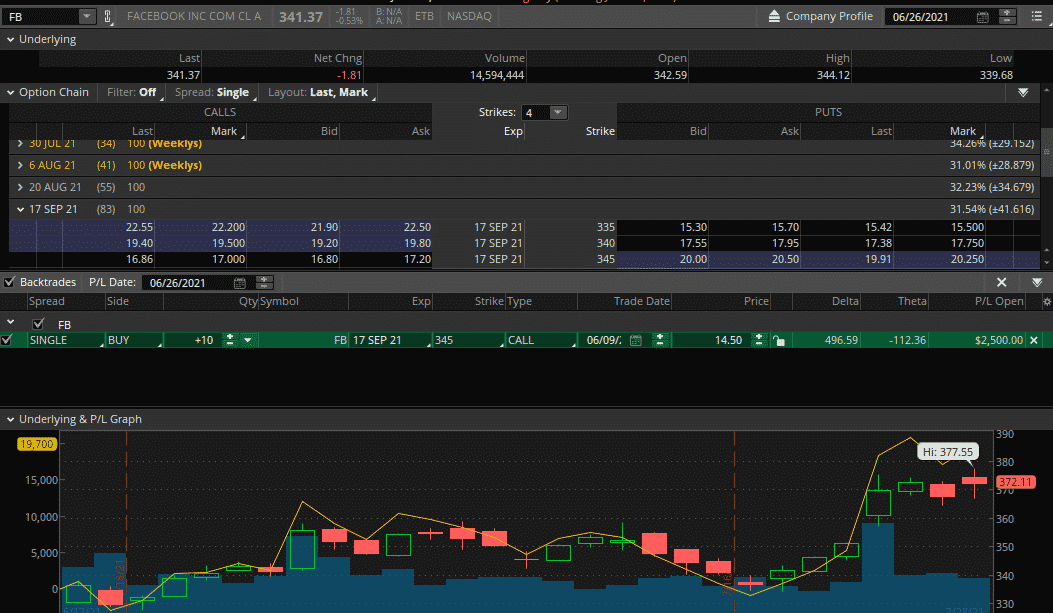In the bustling world of options trading, understanding historical prices is akin to holding a crystal ball, offering a glimpse into the future and empowering traders with the ability to make informed decisions. Options, as financial instruments, derive their value from the underlying asset they represent, such as a stock, bond, or commodity, and historical prices provide invaluable insights into the asset’s behavior and market sentiment.

Image: www.analytixlabs.co.in
The allure of options trading lies in its versatility and potential profitability. Whether you seek to speculate on market movements, hedge against risk, or generate income, a thorough understanding of historical prices is crucial for success. By delving into past price data, traders can analyze patterns, identify trends, and uncover potential trading opportunities.
Analyzing Historical Price Charts: A Window into Market Behavior
Historical price charts are graphical representations of an asset’s price movements over time. They provide a visual depiction of market activity, allowing traders to identify key support and resistance levels, pinpoint potential breakout points, and assess the overall trend of the asset.
Support levels indicate price areas where the asset has historically found buyers, preventing further downward movement. Resistance levels, on the other hand, represent price ceilings that the asset has struggled to surpass. These levels provide crucial guidelines for option traders, helping them determine optimal entry and exit points.
Historical Volatility and Implied Volatility: Gauging Market Expectations
Historical volatility (HV) measures the magnitude of an asset’s price fluctuations over a specified period. It provides an indication of the risk and potential return associated with trading options on that asset.
Implied volatility (IV), a key component in option pricing, reflects the market’s expectations of future price volatility. High IV suggests that the market anticipates significant price swings, while low IV implies a relatively stable price trend. Traders can capitalize on this information by adjusting their option strategies to match market expectations.
Latest Trends and Developments in Option Trading
The landscape of option trading is constantly evolving, influenced by market dynamics, regulatory changes, and technological advancements. Staying abreast of the latest trends and developments is essential for traders to remain competitive and capitalize on emerging opportunities.
Recent advancements in artificial intelligence (AI) and machine learning (ML) have transformed the way traders analyze historical data and make trading decisions. These technologies enable the processing of vast amounts of data, facilitating automated trend identification and the development of sophisticated trading algorithms.

Image: optionstradingiq.com
Expert Tips for Options Trading with Historical Prices
Harnessing the power of historical prices requires a combination of knowledge, skill, and experience. Here are a few expert tips to help you leverage this valuable information:
- Study historical charts diligently: Immerse yourself in the study of historical price charts to identify patterns, trends, and support/resistance levels. This analysis will provide a solid foundation for your trading decisions.
- Combine technical analysis with fundamental analysis: Use historical prices in conjunction with fundamental factors, such as company earnings reports and economic data, to gain a comprehensive understanding of market dynamics.
- Manage risk prudently: Historical prices can’t predict future movements with certainty. Always employ sound risk management strategies, such as position sizing and stop-loss orders, to mitigate potential losses.
- Monitor implied volatility closely: Monitor IV and make trading decisions that align with the market’s expectations of volatility. This can help you avoid losses and maximize gains.
- Stay updated with market news and events: Keep an eye on news and events that can impact the underlying asset’s price. This knowledge will enable you to anticipate potential market movements and adjust your trading strategies accordingly.
FAQs on Option Trading Historical Prices
Q: How far back should I analyze historical prices?
A: The timeframe of historical price analysis depends on the trading strategy. For short-term trading, a few months of data may suffice, while long-term strategies require longer data sets.
Q: Can historical prices guarantee future performance?
A: Historical prices provide insights into past behavior but do not guarantee future results. Market dynamics can change rapidly, and traders should always exercise caution and manage risk prudently.
Q: How do I interpret support and resistance levels?
A: Support levels indicate potential buying opportunities, while resistance levels suggest potential selling points. However, these levels are not static and can change over time, so traders should monitor price action closely.
Q: What is the difference between historical volatility and implied volatility?
A: HV measures past volatility, while IV reflects market expectations of future volatility. Traders should consider both HV and IV when making trading decisions.
Q: How can I stay updated with the latest trends in option trading?
A: Attend industry conferences, subscribe to financial news outlets, and connect with experienced traders. Social media platforms and online forums can also provide valuable insights.
Option Trading Historical Prices

Image: tradingtuitions.com
Conclusion
Navigating the world of option trading requires a deep understanding of historical prices. By analyzing past price data, traders can uncover valuable insights into market behavior, identify trading opportunities, and manage risk more effectively. By embracing the power of historical prices, you can unlock the potential for success in this dynamic and rewarding market.
Are you ready to delve into the world of option trading and harness the power of historical prices? Take the first step today and equip yourself with the knowledge and skills to make informed decisions.






